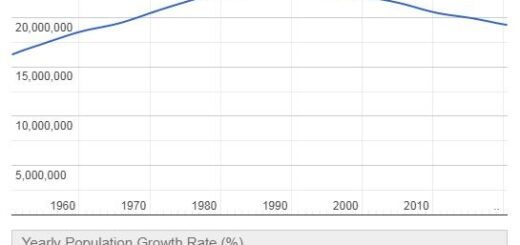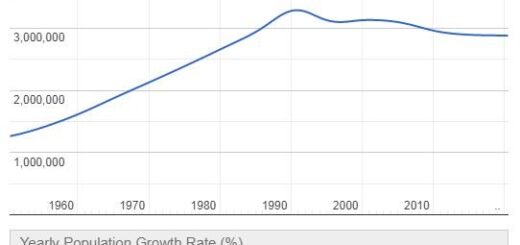Germany History – Germany and Germani
The Rhine and the upper course of the Danube had definitively constituted the border of the Roman Empire, to the east and north of which extended, up to the Vistula and the North and Baltic seas, the vast region, covered with thick forests, from large rivers and marshy stretches, which, from the name given generically to the various barbarian peoples scattered in it, was called Germany. This name, however, had also been attributed to two of the imperial provinces of the diocese of Gaul, which overlooked the Rhine, and included the regions of the left bank, from Argentoratum (Strasbourg) at the mouths, where a large infiltration of Germanic peoples had already taken place: Germany I or superior and Germany II or inferior. Furthermore, lands also in other provinces of the empire would have been the cause of struggles for centuries, still unfinished on the Rhine, to decide whether they belonged to the political organisms of Germany proper, or to the states constituted on its western and southern borders. In the diocese of Gaul, south and west of the two Germaniae, the Maxima Sequanorum (region of the Jura and the southern Vosges, from the Saone to the Rhine downstream of Lake Constance) and Belgica I (Moselle region, between the Vosges and the Argonne). In the diocese of Italy, Raetia I and Raetia II (between the Alps and the right of the Danube, up to the confluence with the Inn); the Noricum Ripense, the Pannonia I, or superior, the Pannonia II or inferior and Valeria (right between the Alps and the Danube, until the confluence with the Sava). In these frontier provinces, numerous cities arose from the occupation and civilization of the Roman conquerors, which, either perpetuating or reborn from their ruins, will often have no small part in the history of Germany: Argentoratum (Strasbourg), Mogontiacum (Mainz), Colonia Agrippina (Cologne), in the two Germaniae ; Divodurum Mediomatricorum (Metz), Virodunum (Verdun), Augusta Treverorum (Trier), in Belgica I ; Augusta Vindelicorum (Augusta), Regina Castra (Regensburg), in Raetia II ; Juvavum(Salzburg), Lauriacum (Lorch), in the Noricum Ripense ; Vindobona (Vienna) in Pannonia’s.
Along all this extended border line Germanic peoples pressed, the vanguard of other barbarian populations, scattered as far as the Vistula. On the coast of the North Sea, from the mouths of the Schelda to the estuary of the Weser, the Frisii ; on the Rhine downstream from the confluence with the Main, the Franks ; to the east of these, in the interior, as far as Elba, looking out over the sea in the region of the estuary of this river, the Saxons, and in the Elbe basin, but moving towards the south-east, the Lombards ; on the Rhine, upstream from the confluence with the Main up to the high Danube at Regina Castra (Regensburg), the Alamanni, of Suevic lineage ; to the east of them, other peoples sueviche, among which, from the sixth century, the Baiuvari or Bavari will begin to be remembered especially ; between the North Sea and the Baltic Sea, in the Jutland peninsula, the Angles and the Jutes ; further south, in the interior, the Thuringians, and, in the Main region, the Burgundians. Other groups from the Baltic regions were moving towards the Danube, such as the Rugi, the Sciri, the Turcilingi, the Heruli, the Gepids, the Vandals, while the people of the Gothic group were already urging the borders of the lower Danube. The consequences of this general shift of the Germanic tribes towards the west and south are serious for the history of Germany. On the one hand, in fact, only Franks, Saxons, Alamanni, Thuringians and Baiuvari remained in the context of the history of Germany; on the other hand, as the Germanic masses, in the 4th to 6th centuries, approach the Rhine and the Danube, closely following the others who had now crossed the limes and penetrating deeper and deeper into the imperial provinces, other barbarian peoples, coming from the Sarmatic steppes, advanced into the regions from those abandoned to the east of the Elbe and into the basin of the upper and middle Danube. They were the Slavs: vendiche tribes, as Vagrî and Abodriti, east of the Elbe estuary, Veletians or Vilzî, Liutizî, militiamen, Sorbs or Sorbs, from the Elbe to the Oder; Czechs, in the upper Elbe basin and further south-east, Moravians and Slovaks ; Slovenes, in the valleys of the eastern Alps, from Vienna to the Enns, to the Mur, to the upper Drava, with irradiation up to Friuli and Istria.
Germany ended up being divided by the Saale and the Elbe at the end of the seventh century, into two unequal parts. The largest, to the east, was now completely occupied by Slavic populations; the smaller one, to the west, preserved the Germanic populations that remained on the right of the Rhine, Saxons and Thuringians, while, on the two banks of the Rhine and the Danube, the Franks, Alamanni and Baiuvari, they were ordering themselves into more advanced political organisms, under the influence of Roman civilization and Christianity, with a tendency, in the Franks, to orient themselves towards Gaul. For a short time (450-454), Slavs and Germans had bowed to the yoke of Attila’s Huns, but it was only a grim episode in German history. The formation of the Frankish kingdom must have had quite different consequences.



